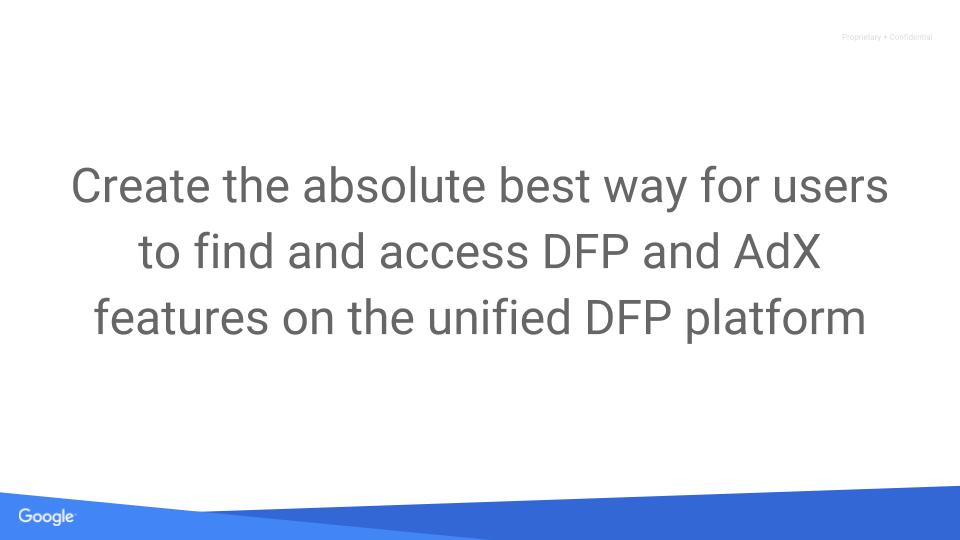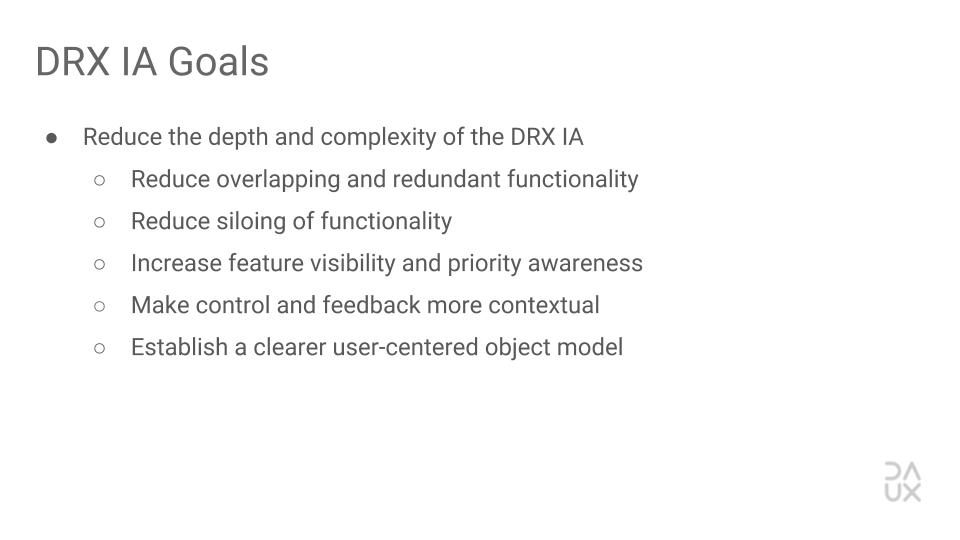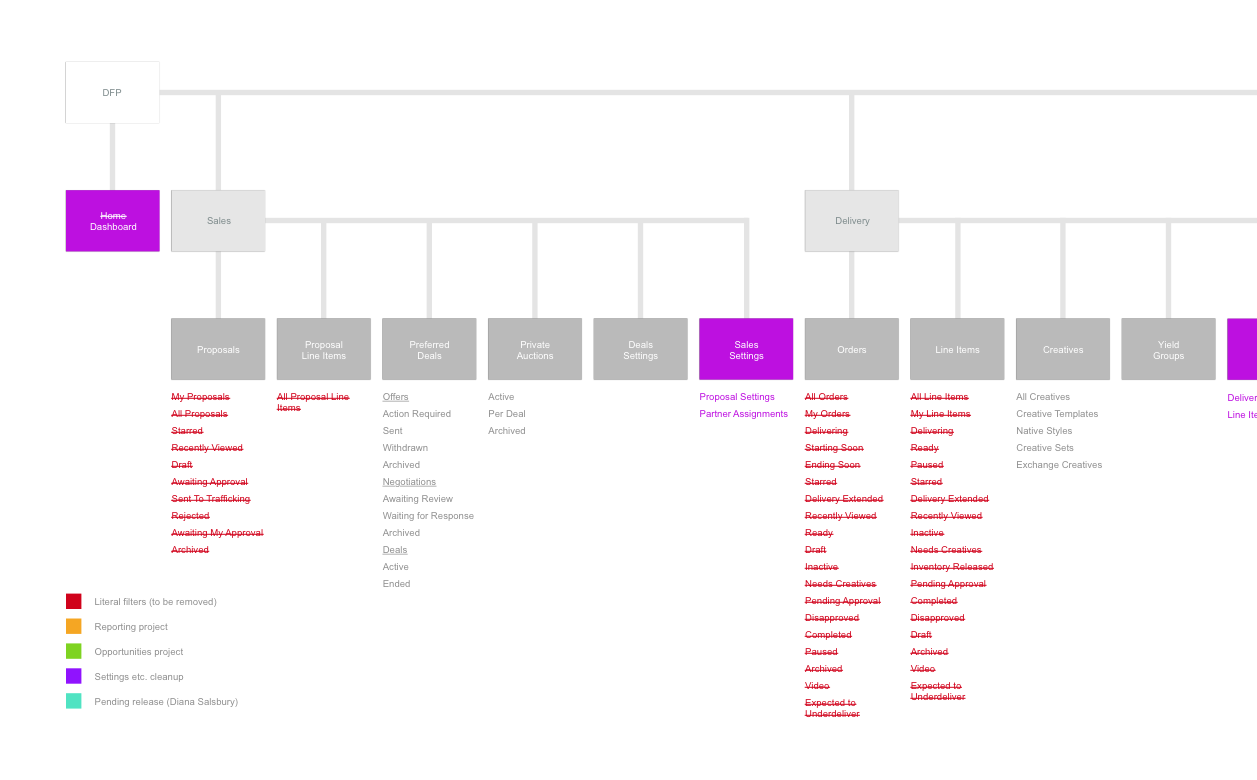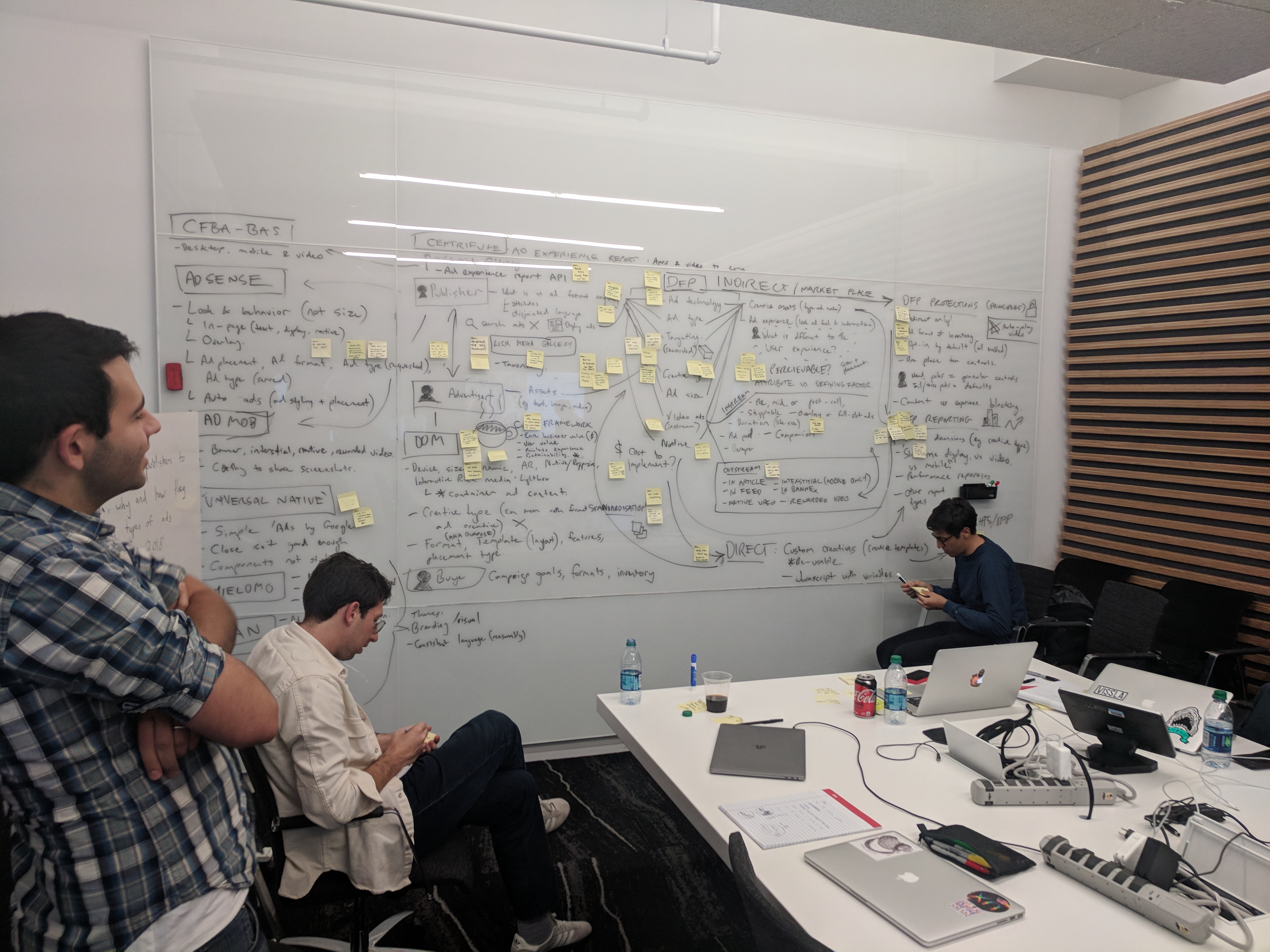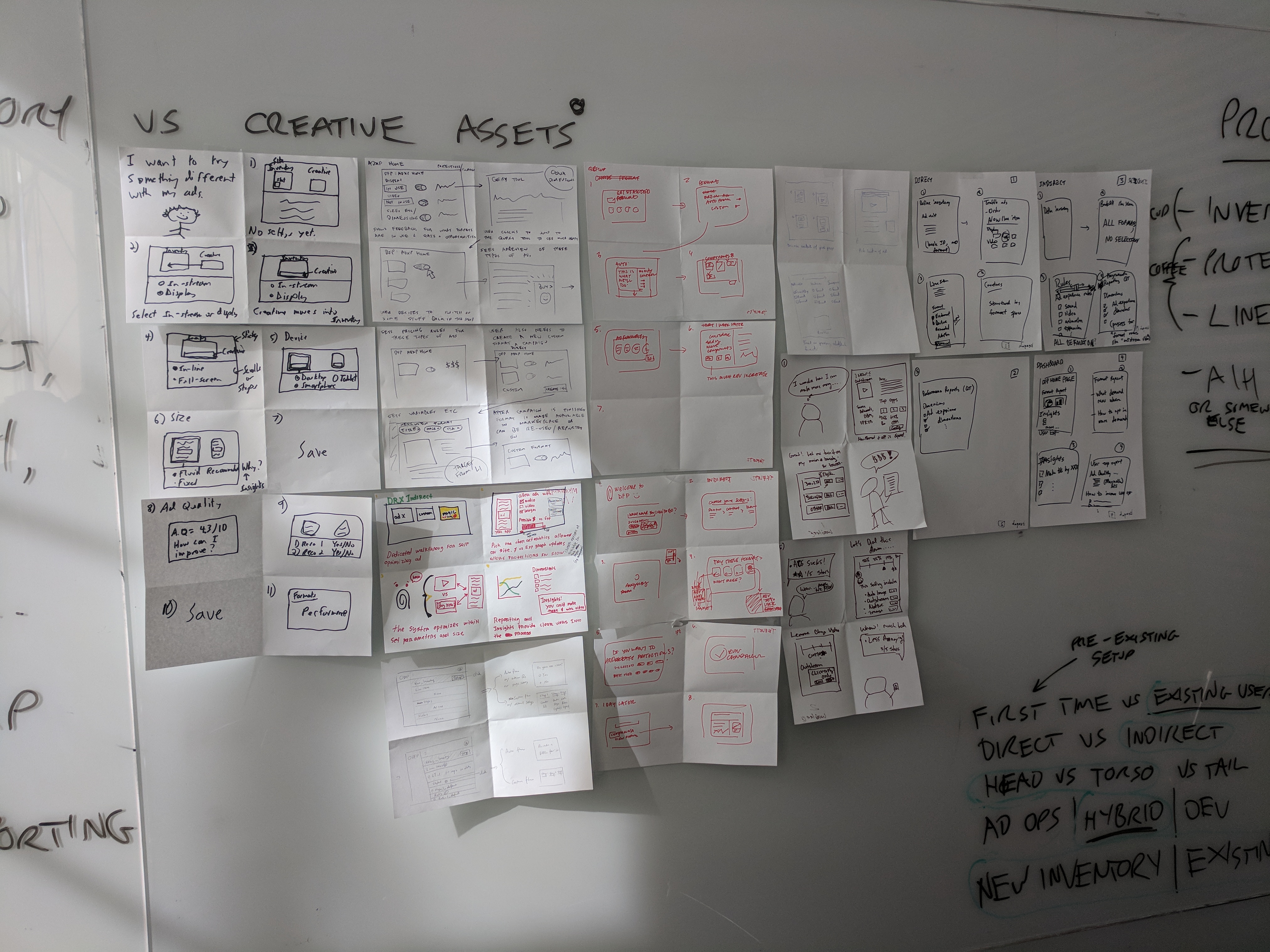Google Ad Manager: IA
Background
Google Ad Manager (AKA DFP and DRX internally) is Google’s largest and most enterprise focused publisher facing ad-tech platform. It is the most competent and feature rich product of its kind on the market but this level of sophistication and capability inherently lends itself to complicated information architecture. This problem is exacerbated by the large number of teams working independently on small areas of the product at the same time and their natural reluctance to slow their progress to communicate with each other.
Approach
Conducted over the entirety of my time working on Google Ad Manager (approximately 18 months), this project required me to collaborate with product managers, designers and engineers from all teams working on Google Ad Manager to document the entire architecture of the product, conduct usability testing to assess the current architecture and navigation, understand the development pipeline and delivery timelines for new features, and facilitate communication between teams to promote a more holistic approach to feature development and reduce the product’s overall complexity.
Outcomes
Creation and maintenance of product sitemaps; development of IA principles and iterative IA strategy; formation of small cross-disciplinary working group to provide oversight and guidance when considering nav changes; and planning and facilitation of design workshops to promote cross team collaboration, a holistic approach to feature development, and reduce overlapping or redundant functionality.
